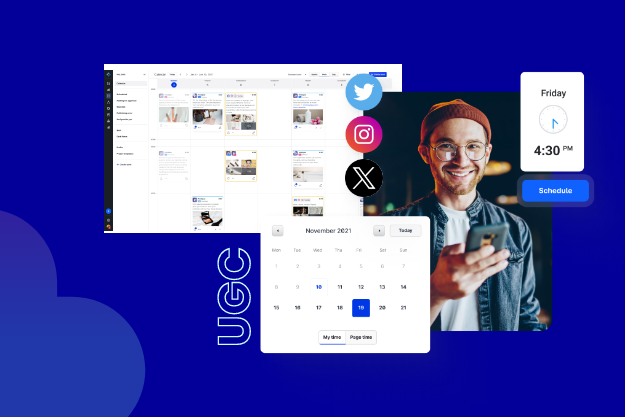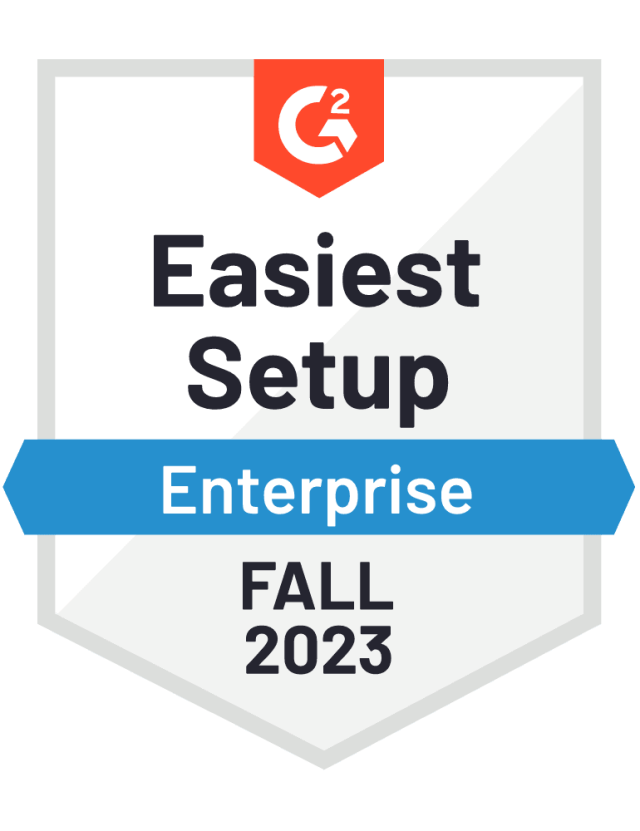Online businesses have grown in staggering numbers and so have the metrics that define consumer behaviors. People don't just take brands at their face value anymore — they do proper research and look for customer reviews.
According to Invesp, 90% of consumers read online reviews before making a decision. However, asking people for reviews is not a simple task. A review request that is pushy or spammy can do your business more harm than having no reviews. So why do businesses ask for reviews via email, despite the risks? Social proof is not the only reason. Below we'll discuss the differences reviews can create and share a review email template strategy designed for higher conversion rates and more responses.
The importance of asking customers for reviews
Betting on customer reviews to improve brand recognition is always a good idea. You can bounce back from PR failure or lack of brand awareness with a string of 5-star reviews, create a competitive edge, improve SEO metrics, and strengthen communication with consumers. On top of that, the entire process is almost free! 84% of consumers trust online reviews as much as personal recommendations, and 76% of consumers will gladly leave a genuine review if asked nicely. Here are our top tips for gathering honest reviews via email.
Identify your loyal customers
User-generated content (UGC) is one of the most effective ways to build trust and grow a loyal community and customer reviews are an extension of the same philosophy that brands have used for UGC. To use positive customer reviews for your marketing campaign, you'll first need to find your brand advocates. These are your most loyal, and repeat customers who have not only made you money but also brought new customers to you. Getting reviews from them should be your top priority.
However, not all of your loyal customers share similar traits. Some of them could be young and social media savvy, while others may have found you on Google. They all differ in their expectations from your products and the significance your brand holds in their lives. While asking for reviews via email, you need to tweak the message to cater to their expectations. You can use an email marketing tool to segment the list for hyper-personalization. After segmenting your email list, you need to verify the email addresses to make sure you're not contacting inactive or irrelevant accounts. By verifying email addresses, you'll achieve a higher email delivery rate.
Utilize inbox submission
Inbox Submission allows your customers to write and submit their product reviews directly within your brand's email, so they never have to leave their inbox. This approach significantly reduces the barriers to leaving a review that customers face when they are redirected to your brand's website. Brands using TurnTo's Inbox Submission tool [Pixlee TurnTo is now Emplifi] typically increase review collection by 50-200%, which can make a major difference in your overall review volume.
Here's what a good email review template by Aritzia looks like using Inbox Submission:

Personalize your copy
Segmented email lists already give you deeper insight into your loyal customer pool. But that's not sufficient. You need to personalize email copy to show that you care, which will encourage your customers to take action. Before crafting an email copy, you must remember that in most cases, they're doing you a favor. So you have to make the job as easy for them as possible. Start by addressing them by their names and the recent purchases they've made. Expand the copy by showing how you appreciate their choices and be honest in asking for reviews. Keep the email short, use a lot of white space, and use a lean email body.
The email body is not the only place to personalize. Far too many brands don't focus on their subject lines, leading to a low open rate. While personalizing email copy, spend some time playing around curiosity-inducing subject lines and preheader text. It's important to keep the subject line very short and not mislead customers. People are more likely to click on your email when you create a sense of urgency or opportunity with your subject line and email copy.
Include review sub-dimensions and profile attributes
Sometimes, a customer might not know exactly what they want to say about their new product without some type of prompt or question. Asking for feedback specific to the product, like if an apparel item runs big or small, or what type of skin the reviewer has when leaving a review for a cosmetic product, also benefits future shoppers, as you can display these sub-dimensions on your product page.

The more relevant product information you can provide customers from their own peers, the more informed they will be about their purchase. This type of review email template leads to more satisfied customers and fewer product returns, which means a better reputation and more revenue for your business.
Offer rewards in exchange for product reviews
We mentioned that in most cases, your customers are helping you with a product review, but in some cases, you can make the deal sweeter by offering a reward. Most customers think that it takes way too much effort to rate or review a product. If reviews are a major part of your marketing goals, you can make your case stronger with a coupon, code or product perks.
You can give coupons to upsell products by offering discounts on next purchases. You can also use third-party gift cards to encourage people to leave reviews. By offering a reward to your loyal customers, you can cultivate a sense of community while still encouraging them to leave an honest, authentic review.
Keep timing in mind post-purchase
A great deal of email marketing hinges on timing. If your email lands out of the blue, there's a good chance customers won't bother taking action. That's why learning when to send emails is a crucial skill. When you're planning to ask for reviews via email, post-purchase emails work the best. The interaction is still fresh in the customer's mind, they've just got the taste of the product and it's the most invested you'll find a customer in your brand. This is also why TurnTo's Checkout Comments™ are a popular solution for brands looking to get more reviews, faster; customers can share their reason for purchasing, informing both your team and future shoppers on how your products are being used. Navy Hair Care and Ariana Grande's cosmetics brand r.e.m. beauty are just a few of many leading brands using Checkout Comments™ for increased customer content.


To start off, weekends, Friday evenings, and Monday mornings see the lowest opening rates. This is also the case for the holidays and late nights. Here are the industry-specific open rates that should give you a fair idea about the metrics you should be targeting.

If you have a global customer base, make sure you've done enough research about them before asking for a review via email.
Use a clear call-to-action (CTA)
Product review emails are all about asking customers to perform certain tasks, and that's where your call to action (CTA) strategy becomes important. You want to make sure your CTA is clear and instructive. The email body should be devoid of cluttered or moving pieces. Follow the logical progression of your email, use bold texts and big, interactive buttons for a call to action. Generally, it's always a good idea to stick to one CTA so that you can finish your email strongly. While customizing your CTA button, use action verbs and phrases in the second person. A few great CTAs would be 'Review your [product name] today', 'Spread the word', 'Write a review', 'Click to rate', etc. Take a look at some call-to-action examples to apply the best one for your mail.
Effective review email template
If you have read this far, you now have a solid idea about the do's and don'ts of asking for reviews via email. Here are a couple of email templates for you to get started:
Review email template #1
Subject line: What do you think of [product name]?
Email body: Hi [name], Thank you for purchasing the [product name] from [brand name]! We're so glad to have you on board and looking forward to helping you [brand proposition].
If you have a minute to spare, please rate and review the product. Genuine insights from customers like you help our team improve our products and help others make the right purchase.
[Review Text Box or CTA]
Have a blast!
[Email signature]
Review email template #2
Subject line: How did it go with [product name]?
Email body: Hi [name],We hope you're having a blast with your new [product name]! Let us know what you think of it by leaving a review. Each review that you share, allows us to improve and give our community what they need.
[Click to review]
Thank you! Sharon from [brand name]
On the other hand, the email below fails to convert. It's not personalized, looks generic, and doesn't come across as authentic.
Subject line: Share feedback
Email copy: Dear customer, Thank you for your purchase. If you want, click on the button below to share a review of the product.
Thank you.
[Brand name]
Asking for reviews via email is a cost-effective way to scale up. At the end of the day, it all boils down to coming across as genuine and keeping your email short but make sure your emails comply with the guidelines of websites like Google and Yelp. Even if you get negative feedback, it gives you insights to improve in the future.
Editor’s Note: This article was originally published on pixlee.com. Any statistics or statements included in this article were current at the time of original publication.






























